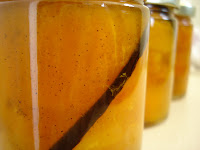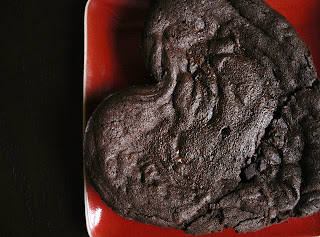I may get in trouble for using their real names, but we can't go on pretending we were preparing something else here. While the challenge allowed for us to chose one or both of the recipes, I went with both: Milanos because they were a beloved childhood treat, and Mallomars because of the challenge in making marshmallow topped cookies dipped in chocolate.
Unfortunately, I found the "Milan" cookies a disappointment. They had a considerable amount of lemon extract in the recipe, and it proved too much for me. Not only did the cookies taste unlike their paper-cupped cousins, but they were texturally off - too chewy. While I probably wouldn't make these again, I wouldn't necessarily suggest that you shouldn't, I would only advise not to enter into the task expecting a certain kind of result. Let these cookies be what they are, not what you want them to be.

Now, as for the Mallomars, I had a completely different experience. Fun, challenging (but not too challenging), pretty messy (in a good way), super-cute and delicious. How can you not love all of that?
If you've ever made marshmallows before, you know they can be quite a task. Let me be specific, if you've only ever made marshmallows with egg whites (like myself), they can be extremely temperamental. I first made marshmallows many years ago, after catching some inspiration off of a Gourmet magazine cover and deciding to make a slew of cookie and candy treats for friends and family as holiday gifts. I think back then I was a bit less confident and followed recipes quite well; the marshmallows came off without a hitch. But since, every attempt at marshmallows, (among a few other things, let's be frank) has been hit and miss. I typically make them twice on every occasion because inevitably, on the first go, I overheat the sugar syrup and it won't blend properly (ahem, at all) into the whipped egg white, yielding lumps of hard candy in curdled egg foam rather than the anticipated sugary white fluff.
So imagine my delight when I found this recipe had no egg whites at all. And what a difference it makes! Not to mention, there is a touch of corn syrup in the melted sugar base that makes it next to impossible to crystallize the sugar when melting - another "issue" I've experienced from time to time. I dare call this marshmallow recipe infallible!

Now, piping the marshmallows on the cookies is where the messy part begins. All I can tell you is work quickly, 'cause the marshmallow starts to set fast, which means it just keeps getting stickier. And be prepared to get into things when it's time for dipping the cookies in chocolate, maybe I should say this is where the messy part begins. But it is fun, and quite simple, thought somewhat time consuming; and they're just so darned cute once sprung from their chocolate bath.

I made the cookies 1-inch rounds as the recipe specified, and I ended up with more than 6 dozen little cookies rather than "about 2 dozen" as the recipe stated. I must have rolled them thinner than recommended, which I must say, was just perfect, so if you're in a take-my-advice kind of mood, then halve the cookie recipe and roll them to about 3/16 of an inch. I know, so technical of me, and yes, that still gives you about three dozen cookies - which is fine because that's just about how many marshmallow kisses you'll have, too. Better still, at that size, they're poppers, as in, one bite, as in, you can eat half a dozen without blinking, as in, don't worry there's more.
Just what I need.




























